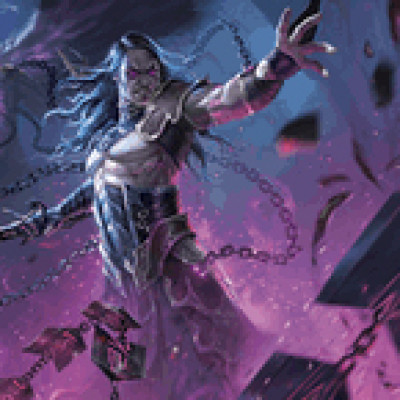Jacob Smith first shared his Chane expertise with us back in May, shortly after Monarch's release. (That article is essential reading before heading into this one.) The meta has evolved since those early days, but Chane has remained at the forefront of it- and now faces the challenge of targeted opposition and mirror matches. In this article, Jacob takes a question-and-answer approach to refining your Chane deck for the Road to Nationals events in August.
Is Chane Still Top Tier?
The general consensus of experienced players is yes, with many of them planning to pilot him throughout future events. In my personal opinion, the top four heroes in today's Classic Constructed format are:
- Bravo
- Chane
- Prism
- Katsu
Bravo is still very strong and doesn't really have any bad matchups. Chane is very explosive, and if luck is on his side via Soul Shackle banishes, he is nigh unstoppable. Prism has a very consistent two large attacks per turn strategy that is very effective, putting pressure on any hero- but she stumbles a bit against extreme aggression and lots of 6+ power attacks, which the meta has plenty of. Katsu, particularly the aggro variety, plays a similar role to Chane but with more consistency; Flic Flak plays a pivotal role in allowing him to assert pressure while still defending.
Chane is Really Popular Right Now and I Want to Play Him; How Can I Stand Out?
Whether you are a deckbuilder, experienced player, or new player, the best way to stand out is by your performance. Good performance requires practice, matchup experience, and a bit of luck. You can't do much about your luck, but the other two are under your control.
Step 1: Find a decklist you like, whether its one you've built or one you've found online.
Step 2: Find a couple people you can play with often, be it in-person or online via tabletop simulator.
Step 3: In addition to frequent testing partners, widen your horizons by finding strong opponents that play heroes you don't have as much experience against. Also, try playing as some of those heroes yourself, to gain insights into their strategies and lines of play.
How Do I Deal With the Chane Mirror?
If you plan on playing Chane, you should be prepared to play plenty of mirrors in competition. These games will test not only your skill with the hero but also your luck, as the banishes from Soul Shackle in the late game will play a key role. In preparation, you can dedicate some space in your sideboard to cards that help give you an edge.
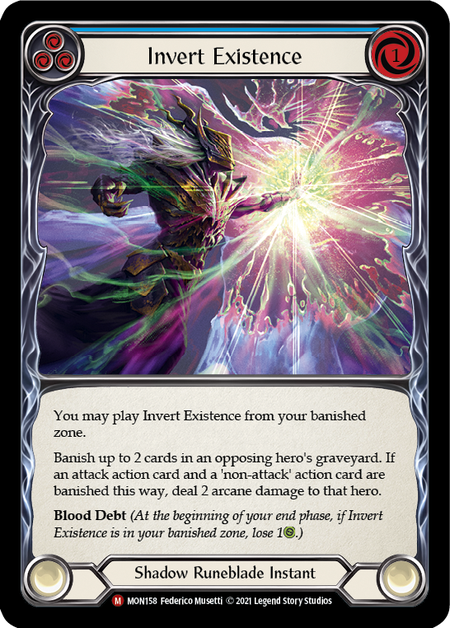
Invert Existence is one of my favorite cards, but it is quite situational so it doesn't quite make it into the main deck for me. Against Chane, it does some great things. It can banish Blood Debt cards at instant speed- meaning you can play it after they have used their Action Point but before they take Blood Debt life loss in the End Phase, forcing them to lose life they can't prevent, as well as dealing two Arcane damage they will have a hard time blocking. As a Blue that can be played from the Banished Zone, it remains versatile even when its effect isn't relevant. Note that you won't always want to play it the turn it gets banished; consider that if you plan on running Dimenxxional Crossroads.

Snag hasn't seen much play, but it has spiked in popularity as a counter to Chane. The reasoning is mainly to counter huge Rift Bind turns, but it also affects Bounding Demigon, Piercing Shadow Vise, Enlightened Strike, and Razor Reflex. The key to this card's effectiveness is timing, so having it in Arsenal is preferred.
Recent clarifications on windows of opportunity regarding Instants have greatly simplified the interaction between Snag and cards that buff themselves. There is a window available between the playing of the card and the resolution of that card being played, wherein you can drop your Snag and cut off the modifier. Just be sure to clarify to your opponent that you're playing Snag before their Rift Bind resolves.
What is the Best Strategy When Deckbuilding Chane?
I have done a lot of deckbuilding with Chane, and I have come to the conclusion that there are two effective build paths: 50/50 and 80/20. These numbers refer to the ratio of Blood Debt cards to Non-Blood Debt cards in your deck.
The theory is that, with the 50/50 version, you play more generically powerful cards, allowing you to be adaptable and have powerful turns even on mediocre banishes from Soul Shackle. This also allows you to have stronger turns in the early game.
In contrast, the 80/20 variant focuses on consistency and late game power turns. You spend the early game defending and pitching cards you want to see banished together in the late game, such as Seeds of Agony and Rift Bind. This version also optimizes both Eclipse and Dimenxxional Crossroads.
Below you'll find the core that both decks share, along with the cards that differentiate the two variants.
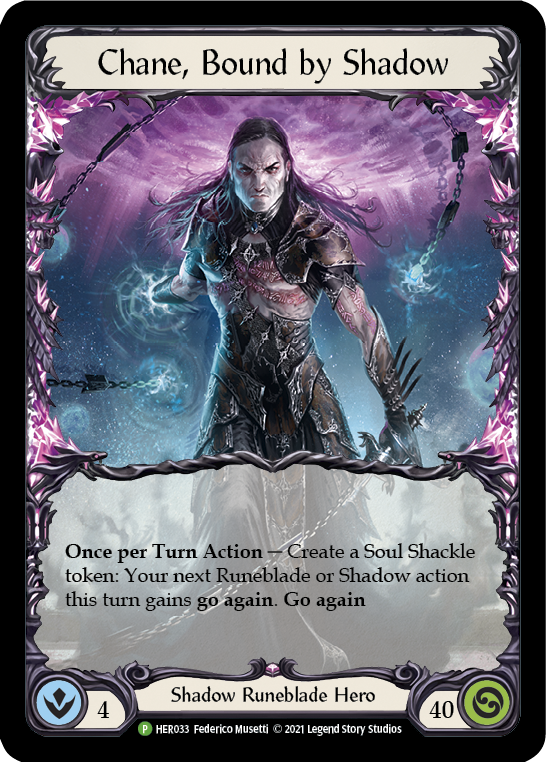
Weapons
Equipment
Loadout
- Art of War (Yellow) (3)
- Bounding Demigon (Blue) (2)
- Bounding Demigon (Red) (3)
- Eclipse (Blue) (1)
- Seeds of Agony (Blue) (3)
- Howl from Beyond (Red) (2)
- Rift Bind (Red) (3)
- Mauvrion Skies (Blue) (3)
- Shadow Puppetry (Red) (3)
- Shadow of Ursur (Blue) (3)
- Rift Bind (Yellow) (2)
- Rift Bind (Blue) (2)
- Seeds of Agony (Red) (3)
- Seeping Shadows (Blue) (1)
- Unhallowed Rites (Red) (2)
- Seeds of Agony (Yellow) (3)
- Vexing Malice (Blue) (3)
- Soul Reaping (Red) (1)
50/50 Variant:
80/20 Variant:
What Is the Best Strategy When Playing Chane?
The general consensus is that spending the early game mitigating damage and setting up, followed by all-out aggression in the late game, is the strongest way to play Chane- and I agree with the majority here. I've tried being aggressive from the start and it tends to be less effective and consistent.
So what do I mean by mitigating damage and setting up? To begin with, you block with most of your hand the first couple turns, and don't use any armor. On those turns, you are looking to do any of the following, depending on what's left in your hand:
- Two Cards in Hand: Make a Soul Shackle, pitch a Blood Debt card, play a card from your Banished Zone, and swing your weapon.
- One Card in Hand: Make a Soul Shackle. Then, either pitch the card in hand to attack from the Banished Zone or with your weapon, -or- pitch the card to Grasp of the Arknight.
- No Cards in Hand: Make a Soul Shackle and pass.
Your main goal in the early game is to build up those Soul Shackles without taking much damage. The reasoning is this: when you start banishing 3+ cards per turn, you can just keep attacking
3+ times per turn while not defending. You will most likely out-damage them and win the race to finish them off first.
When Do I Use My Equipment to Get the Most Out of It?
When talking about single-use equipment, the optimal choices we'll discuss here are Carrion Husk, Ebon Fold, and Snapdragon Scalers. Each one has a strong effect, but timing their use is key to swinging the game in your favor.
First, lets talk about the Legendary Carrion Husk- arguably the strongest card printed in Monarch. A single-use block of 6 is extremely useful to stop on-hit effects, but using it too early will cause you to take Blood Debt life loss each turn. Also, it will automatically banish itself if you start your turn at 13 or less health- so don't wait too long!
In the majority of my games, I will wait to use it until I am around 20 health. By using it to block a strong on-hit attack, you can not only halt their plans but also keep a strong hand to steal momentum.
There are situational cases where using it early is the better play. Those are mostly against Prism, to prevent a momentum-stealing Herald of Judgment or even a Herald of Erudition. You also might block early with Carrion Husk to stop an early Crippling Crush from Bravo or a Mugenshi: Release/Lord of Wind from Katsu, if you have a strong hand to crack back with.
Second is Snapdragon Scalers. This equipment does wonders on any late-game turn where you banish a bunch of attack actions. Getting that 4th or 5th attack is backbreaking for most heroes in the late game, forcing them to block with their whole hand and remaining equipment while still taking some damage. If you already have Eclipse banished, Scalers can give you the reach needed to hit that 6th card, or even give that 6th card Go Again so you can swing with Ursur the same turn you summon it.
Ebon Fold may, arguably, be seen as less useful than Arcanite Skullcap. I agree with the sentiment for Blitz, but in Classic Constructed the ability to banish a card and draw a card at instant speed is extremely clutch. I have been saved by it a ton of times when I don't have enough to pitch, need that 6th card for Eclipse, or even have Eclipse stuck in hand.
Which Weapon Do I Use?
This one is still up to personal preference, but each of the three choices have their strengths and weaknesses. (Sorry Dread Scythe, you don't make the cut.)

Nebula Blade is my personal favorite, as the 4 attack with a decent on-hit effect is quite strong. The two resource cost might seem hard to use, but with the low cost curve of the deck I rarely have issues paying for it. We also run plenty of Non-Attack Actions to make sure it's got the +3.
Galaxxi Black is pretty useful in particular when using the 80/20 variant, as you can more easily trigger Rip Through Reality. Still, Nebula does similar things with the Runechant it creates, so I think Galaxxi Black is inferior.
Reaping Blade is more a niche option. If you run a higher cost curve, where the lower resource cost matters, and you want to mitigate Bravo's or Boltyn's healing, this is a good option.
What Should I Have In My Sideboard?
Using the decklists for 50/50 and 80/20 we have above, let's take a look at sideboard options. With 5 slots for weapon and equipment (Nebula Blade, Ebon Fold, Carrion Husk, Grasp of the Arknight, and Snapdragon Scalers), that leaves 15 slots for our sideboard.
The five heroes we need to sideboard against are Bravo, Prism, Chane, Boltyn, and Dorinthea. Three of them are top tier decks; the other two are Warriors.
I use the following Sideboard for both the 50/50 and 80/20 variants:
Invert Existence x3. These are mainly brought in against Chane to force extra Blood Debt damage and even break Dimenxxional Crossroads. They are also useful at a one/two of against Bravo, and against Azalea running Memorial Ground.
Snag x2. As brought up before, these are useful against the Mirror to counter big Rift Bind plays, but they are also useful against Katsu as they prevent buffs from Combo as well as from Ancestral Empowerment and Razor Reflex.
2 Timesnap Potions are brought in against Prism in order to have a failsafe against Arc Light Sentinel. They can also be useful against Bravo and Azalea, who can prevent Go Again with attack action effects.
3 Springboard Somersaults bolster your defense reactions against Dorinthea and Katsu. They can also be useful against Prism when they don't expect you to have a defense reaction available. This is the same reason for the two Fate Foreseens in the sideboard.
As for the singletons: Reaping Blade is brought in against Bravo and sometimes Boltyn, to prevent life gain. Crown of Dichotomy is a Viserai counter, to give us Arcane Barrier. Remembrance can be included vs. any control/fatigue deck, such as Bravo.
Explain Sideboarding a Little More. When Do I Swap vs. Add?
This is a tough question, mainly because it depends heavily on personal playstyle and how much information you have on the opponent's deck. I'm not going to take you through sideboarding on every matchup, but it's worth touching on the biggest threats, and discussing why.
When playing against Bravo or other control or defensive decks, I tend to want to run around 66 cards. This means adding 6 cards- usually two Invert Existence, one Timesnap Potion, one Remembrance, and two Springboard Somersault. As noted twice above, this is also the game where I switch to the Reaping Blade.
When playing against midrange or aggressive decks, I prefer to be as close to 60 as possible.
Against Prism, I add two Timesnap Potion and two Springboard Somersault. In the 50/50 variant, these take the place of two Razor Reflex and two yellow Mauvrion Skies; in the 80/20, I pull out 1 blue Mauvrion Skies, one blue Vexing Malice, one yellow Seeping Shadows, and one Mutated Mass. I do this to add counterplay against Arc Light Sentinel.
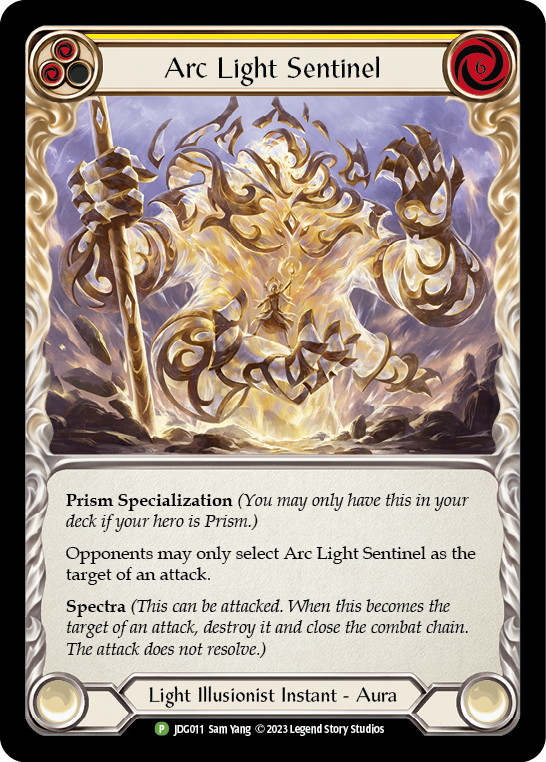
In the Chane mirror, which we've discussed already, my 3x Invert Existence and 2x Snag come in, but only 4 cards go out. In the 50/50 variant, that's 2x blue Rift Bind and 2x Command and Conquer; in the 80/20, it's 3 blue Rift Bind and a single copy of Dimenxxional Crossroads. I target those blue Rift Binds because they're so bad when they get Snagged.
Against Katsu,add two Snag, two Springboard Somersault, add two Fate Foreseen. Then take out two Snatch, two yellow Mauvrion Skies, and one Meat and Greet if you're playing the 50/50 variant, or two blue Rift Bind, one blue Mauvrion Skies, one blue Vexing Malice, and one yellow Seeping Shadows for the 80/20 variant. You want to add free defense reactions while taking out cards that are weak versus Flic Flak.
Defense deactions are very helpful against Warriors, so when we face Dorinthea or Boltyn we swap them in, taking out some cards that block for 2. Three Springboard Somersault and two Fate Foreseen tap in for 2x Razor Reflex and 2x yellow Mauvrion Skies in the 50/50 variant; when playing 80/20, drop a blue Mauvrion Skies and all three Dimenxxional Crossroads instead. Dimenxxional Crossroads is easily destroyed by Steelblade Shunt, so it's not worth the space.
What Situations Might Cause You To Switch Strategies Mid-Game?
There are two situations that come to mind: banishing Eclipse in the early game, and getting a Timesnap Potion down early versus Prism.
When Eclipse gets banished early, it gives us an extra play path that can net huge tempo at the cost of some life loss. As previously discussed, the first three or four turns are used to set up and make Soul Shackles. If Eclipse gets banished during those turns, I'm going to adjust my set up plans to trigger it. I do this by letting Blood Debt cards, banished from Soul Shackles in those early turns, stay in the Banished Zone until I can get off six in one turn. This will cause you to lose some life, but the payoff of a huge go wide turn and Ursur the Soul Reaper is worth it.
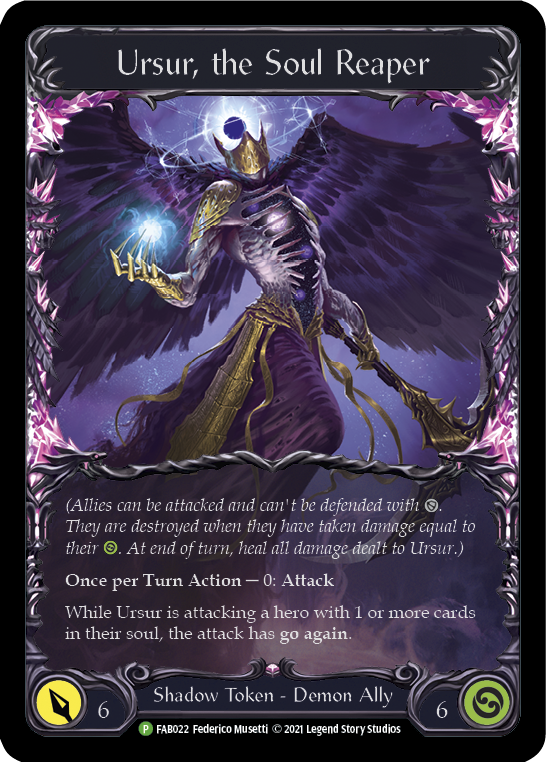
As to the other play, with an early Timesnap Potion down against Prism, you no longer have to work about a random Arc Light Sentinel stopping your turn in its tracks. That safeguard allows you to go all in on your aggressive lines, knowing they can't cut you off abruptly.
How Do I Prevent Tilt? Especially with Bad Soul Shackle Banishes?
This is one of the most difficult things about playing Chane: you rely on luck even more than normal. To prepare yourself mentally for playing Chane, I recommend getting a lot of games in, to numb that feeling of disappointment when things go wrong. Try to keep in mind that, when his banishes are good, he is ridiculously strong; the opportunity for luck to screw you over is part of the game balance indended to keep Chane in check.
Lastly, if you are just plain fed up with banishing non-blood debt cards, you can run the 80/20 variant of the deck. This gives you much more consistent banishes at the cost of some powerful
meta cards. This is also a great option for those on a limited budget, as you aren't running the expensive Command and Conquers and Enlightened Strikes.
How Should I Prepare for the Calling/Road to Nationals/Nationals?
The best advice I can give is nothing revelatory. Before any big event, you need to get in as much practice as you can. Get plenty of sleep! And remember to have fun. You can be competitively minded, even harboring a strong urge to win, while still having fun. And lucky for you, Chane is a blast to play; even if you find yourself 8 hours into a tournament climb with Chane, you'll never get bored!




